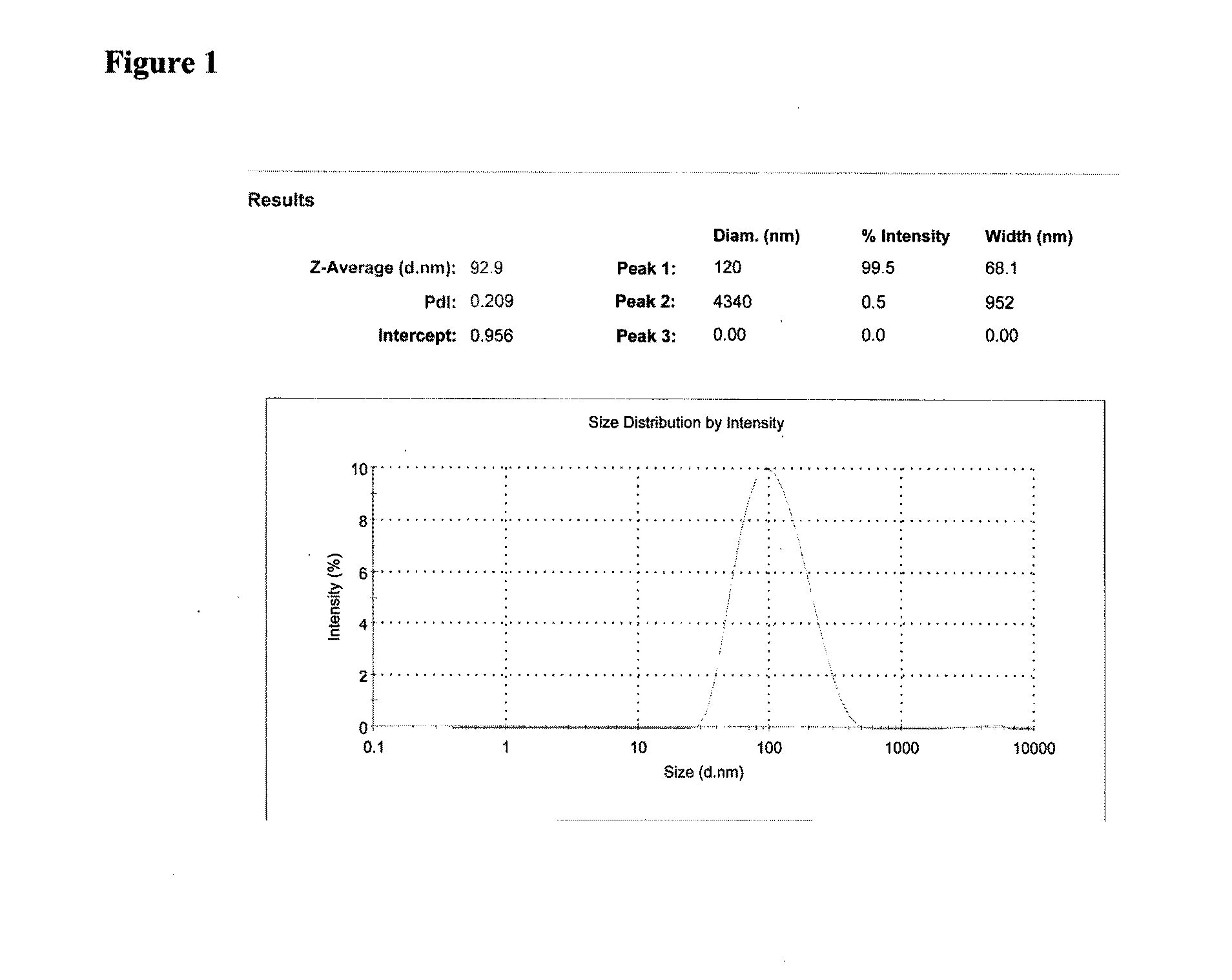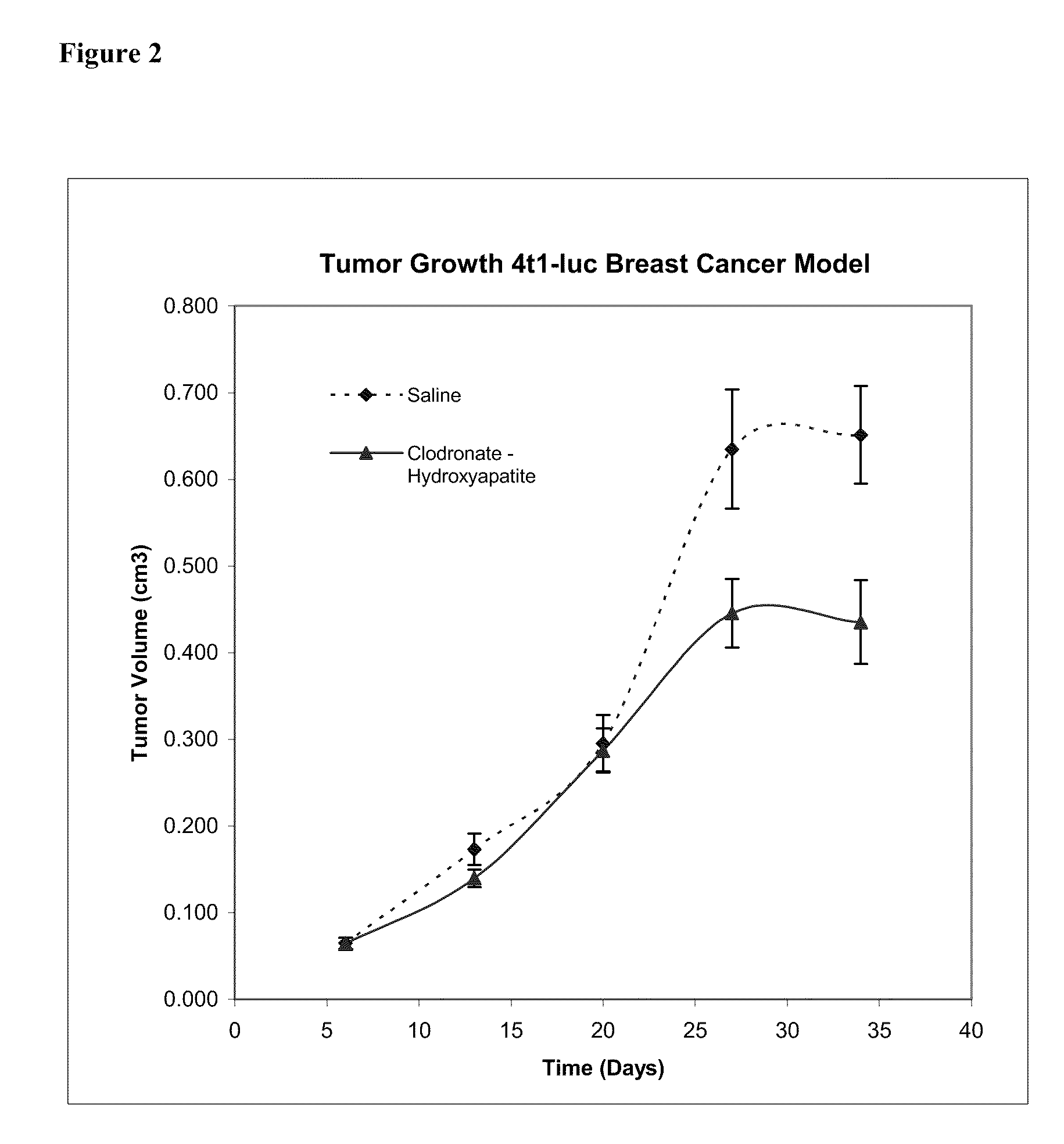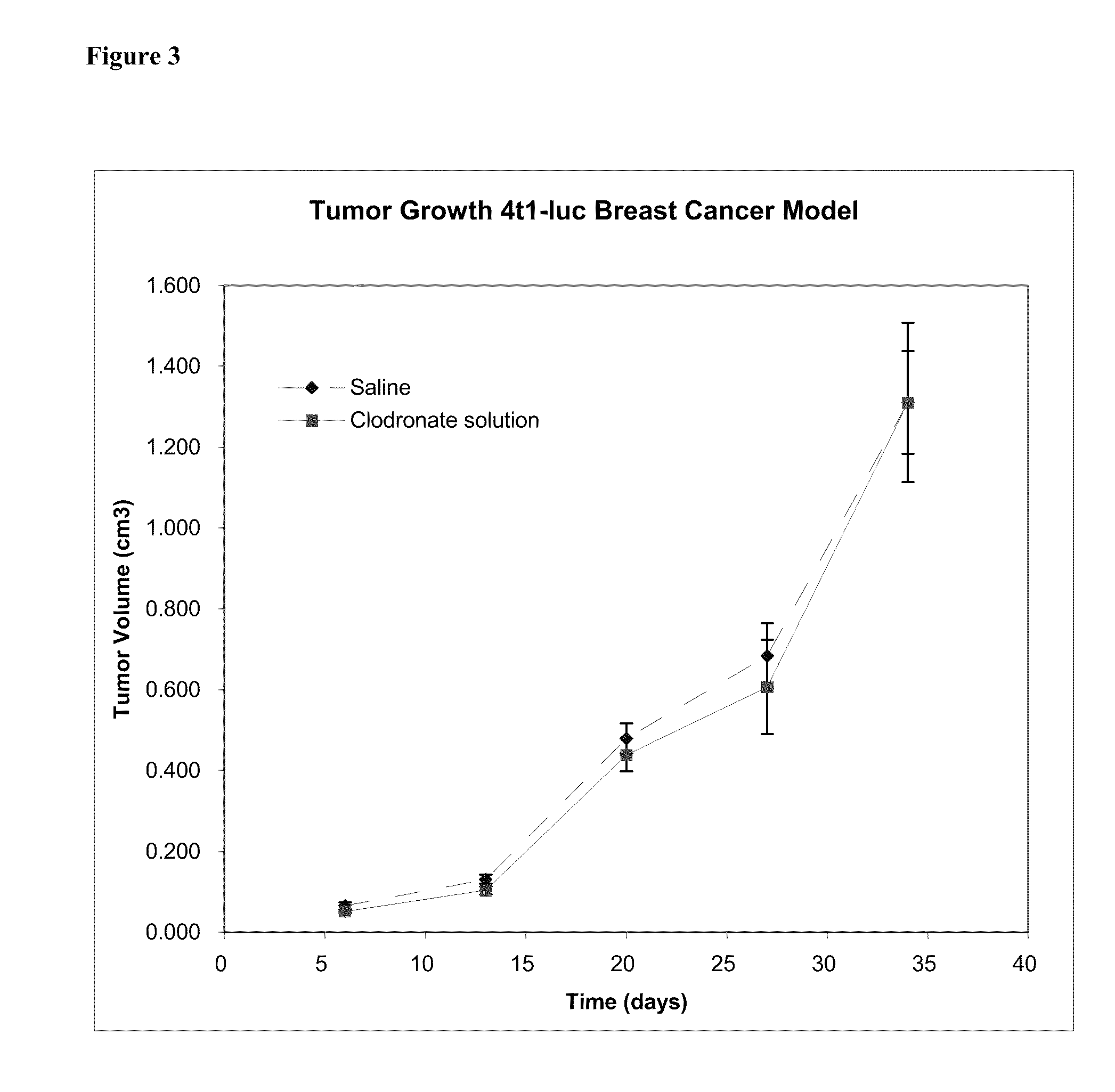Microparticle compositions to modify cancer promoting cells
a technology of microparticles and cancer, applied in the direction of biocide, drug composition, active ingredients of phosphorous compounds, etc., can solve the problems of biphosphonates in their free form being almost incapable of crossing the cellular membrane, hypersensitivity reactions, and other signs, so as to reduce the number of cancer-associated macrophage progenitor cells and reduce the number of cancer-associated macrophages
- Summary
- Abstract
- Description
- Claims
- Application Information
AI Technical Summary
Benefits of technology
Problems solved by technology
Method used
Image
Examples
example 1
Clodronate-Hydroxyapatite Nanoparticles Inhibit 4 μL Breast Cancer Tumor Growth
[0097]This example illustrates that clodronate-hydroxyapatite nanoparticles inhibit the growth of 4 μl breast cancer tumors in a mouse model
[0098]Preparation of Clodronate-Hydroxyapatite Nanoparticles.
[0099]Clodronate-hydroxyapatite nanoparticles were prepared by combining commercially available clodronate with a nanosuspension of hydroxyapatite nanoparticles using a variation on that previously described (Ong H T et al., J. Nanopart. Res. 10: 141-150, 2008). Briefly, clodronate (473 mgs, Sigma-Aldrich) was added to a suspension of filtered 4% (wt / wt) hydroxyapatite nanoparticles (40 mL, Himed). The suspension was allowed to incubate overnight to allow the clodronate to bind to the hydroxyapatite. The suspension was diluted with a 2× phosphate buffered saline (Sigma-Aldrich) for a final suspension of clodronate (5.6 mg / mL), hydroxyapatite nanoparticles (2 wt / wt %) in phosphate buffered saline.
[0100]Charac...
example 2
Pamidronate-Hydroxyapatite Nanoparticles Inhibit 4 μL Breast Cancer Tumor Growth
[0108]This example illustrates that pamidronate-hydroxyapatite nanoparticles inhibit the growth of 4 μl breast cancer tumors in a mouse model.
[0109]Preparation of Pamidronate-Hydroxyapatite Nanoparticles.
[0110]The preparation of the pamidronate-hydroxyapatite suspension was similar to the that used in Example 1 with the difference of 2.5 mg / mL pamidronate used in the suspension. Briefly, pamidronate (200 mg, Sigma-Aldrich) was added to 40 mL of hydroxyapatite nanoparticle suspension (4%, Himed). The suspension was allowed to incubate to allow time for the pamidronate to adsorb onto the hydroxyapatite. The pamidronate-hydroxyapatite suspension was diluted with 2×PBS to a final concentration of pamidronate (2.5 mg / mL)-hydroxyapatite(2%).
[0111]Characterization of Pamidronate-Hydroxyapatite Nanoparticles.
[0112]For the determination of particle size distribution and zeta potential, the pamidronate-hydroxyapat...
example 3
Alendronate-Hydroxyapatite Nanoparticles
[0118]This example illustrates the preparation of an alendronate-hydroxyapatite nanoparticle suspension.
[0119]The preparation of the alendronate-hydroxyapatite suspension was similar to that used in Examples 2 and 3. Briefly, alendronate (100 mg, Sigma) was mixed with 10 mL of hydroxyapatite nanoparticle suspension (4%, Himed). The alendronate was allowed to incubate at room temperature for nine days with periodic mixing.
[0120]The percent alendronate bound to the hydroxyapatite nanoparticles was determined using a difference between the solution concentrations of alendronate initially and after the alendronate-hydroxyapatite suspensions were allowed to incubate. The concentrations were determined spectrophotometrically using a ninhydrin assay.
[0121]The percent of alendronate bound to the hydroxyapatite nanoparticles was determined to be 89% of the total alendronate yielding a mass ratio of alendronate to hydroxyapatite of 22%.
[0122]The particl...
PUM
| Property | Measurement | Unit |
|---|---|---|
| Fraction | aaaaa | aaaaa |
| Diameter | aaaaa | aaaaa |
| Diameter | aaaaa | aaaaa |
Abstract
Description
Claims
Application Information
 Login to View More
Login to View More - R&D
- Intellectual Property
- Life Sciences
- Materials
- Tech Scout
- Unparalleled Data Quality
- Higher Quality Content
- 60% Fewer Hallucinations
Browse by: Latest US Patents, China's latest patents, Technical Efficacy Thesaurus, Application Domain, Technology Topic, Popular Technical Reports.
© 2025 PatSnap. All rights reserved.Legal|Privacy policy|Modern Slavery Act Transparency Statement|Sitemap|About US| Contact US: help@patsnap.com



